How does a flush valve work? This is the question that most people (curious ones) have in their minds.
Now when you have hit on my blog, let me greet you because here you will find the answer to this question in detail.
A flush valve works like a normal flush: once the button is pressed, the handle is lifted and allows water from the tank to flow out of a hole in the bottom of the toilet. The water fills the bowl, flushing any waste into the pipe below.
What Is A Flush Valve?
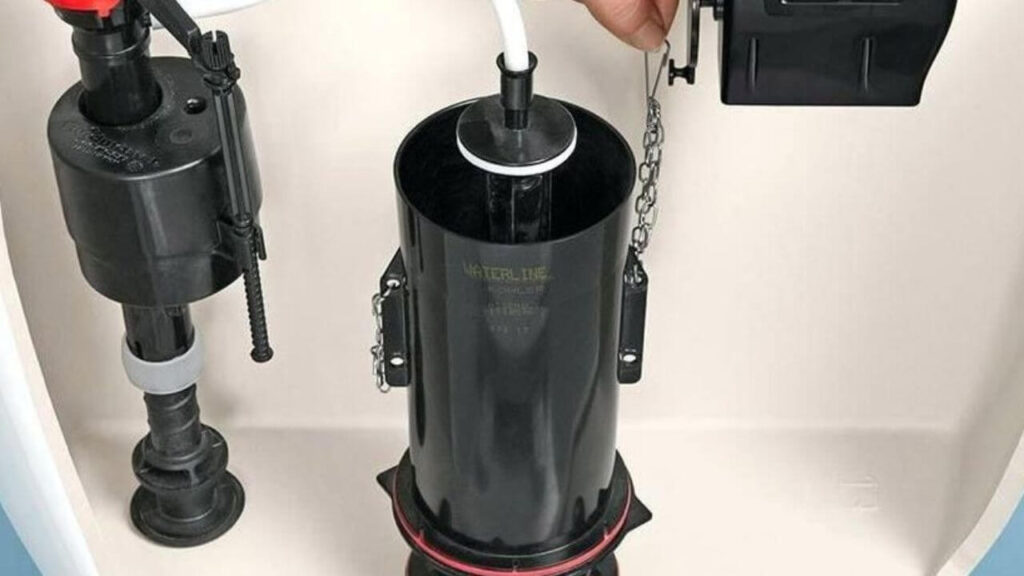
To understand how a flush valve works, first, you must know what a flush valve is. Relax; you don’t need to google it or read a broad descriptive blog.
Here I am giving you a simple and short description of the flush valve.
A flush valve is a plumbing device that controls the water flow in a pipe. It works by opening and closing to allow water to pass through or stop it from flowing.
A flush valve is usually located at the bottom of a toilet tank. Pushing the handle down on your toilet activates the flush valve so that water flows out of the bowl and into your pipes.
The flush valve can be made of plastic, metal, or rubber. Plastic flush valves are used in toilets with low-flow toilets (1.6 gallons per flush).
Metal valves can be found on older toilets that use 3-5 gallons per flush (GPM). Rubber valves are commonly found in newer toilets with 1.6 gallons per flush (GPM).
The Purpose Of Flush Valve In The Toilet
Flush Valve, this little device is crucial to your toilet, even if you don’t know it’s there. Why? Because of its purpose. Do you know what the purpose of this little beast is? Let me tell you.
The purpose of the flush valve in a toilet is to control the water flow into and out of your toilet tank. It’s an essential part of your toilet system that lets you flush without wasting water or waiting too long for it to refill.
A flush valve consists of three main parts: an inlet, the part where water enters; a diaphragm, which creates pressure by pushing against the inlet; and an outlet, which allows water to flow out of the tank when needed.
Pushing down on the handle triggers a lever that lifts up the diaphragm, creating pressure. The pressure pushes against water entering through the inlet, forcing it into your toilet tank.
That’s how it flushes (exciting, right?). I am excited to give you a broad detail about how a flush valve works in the next para.
How Does A Flush Valve Work?
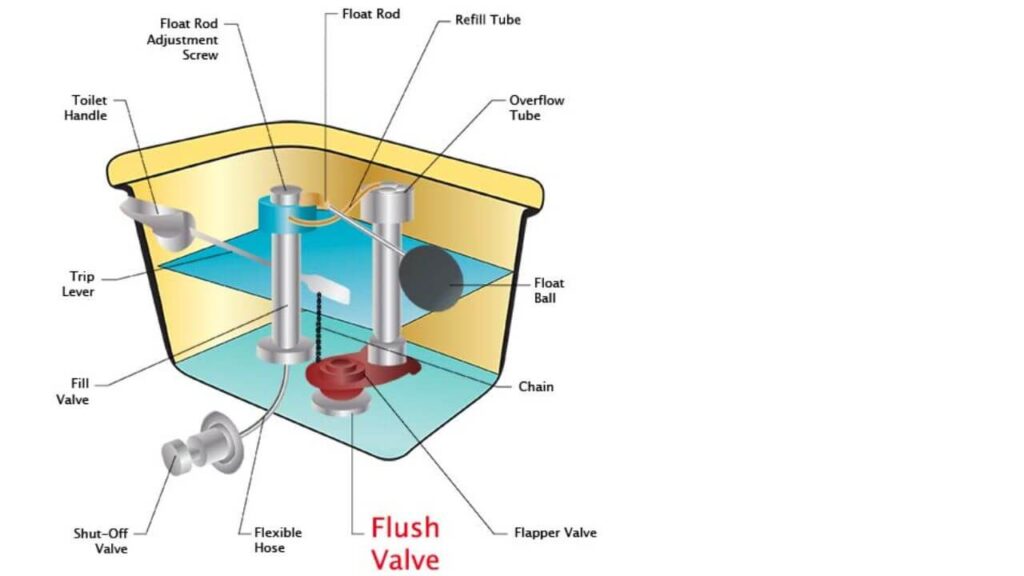
The flush valve is a simple device that works in the same way as a sink drain stopper. The flush valve is inside your toilet tank and connected to the water supply line (As I have mentioned above). Pressing the handle on your toilet allows water to flow through the tank, into the bowl and out of the drain pipe.
Let’s have a look at how this valve works.
1) When You Press Down on The Handle, The Stopper Pulls Up, And Water Begins To Flow Into The Bowl
Firstly, the stopper pulls up when you press down on the handle, and water begins to flow into the bowl.
This moving water then pushes waste matter down through your plumbing system and into your sewer system for disposal at a wastewater treatment plant.
2) When You Pull The Handle Up, Letting Go Of The Toilet, The Water Stops Running
When you pull the handle up, letting go of the toilet, the water stops running. When you push the handle down, start up again. The flush valve is a simple mechanism that has been around for centuries.
It’s not uncommon for people to have trouble with their flush valves after being in place for years without maintenance or repair work—especially if they live in an area where water is scarce and needs to be conserved (like California).
Related Blog:
Mechanism Of A Flush Valve
A flush valve is a simple mechanism that’s been around for centuries.
It’s essentially a valve, or flap, installed in the overflow pipe of your toilet tank. When you push down on the handle to flush your toilet, water from the main tank will flow through this overflow pipe and enter into an internal chamber called an “inlet chamber.”
The water then flows downward through two holes at the bottom of this chamber—one hole connects to your toilet bowl while another connects with a hose leading up through your bathroom wall or flooring outside your house.
The flapper opens when you push down on it, allowing water to flow overtop into this inlet chamber, where it continues its journey until reaching its final destination.
Either directly filling up your bowl or traveling elsewhere via another long hose connected underneath (or above).
Either way, when all has been said and done and everything has settled back down again after being flushed away from sight and any lingering odors, the flapper closes automatically once more.
So that no more liquid can pass through except during subsequent uses.
Types Of Flush Valves
Flush valves are the plumbing fixtures that help your toilet and urinal eliminate their contents.
They can be made from different materials, but they all work similarly: there’s a hole where you put water in and another where the water comes out.
Because flush valves are so standard, we need to understand their differences to protect our health and water supply.
1. Piston Type Flush Valve
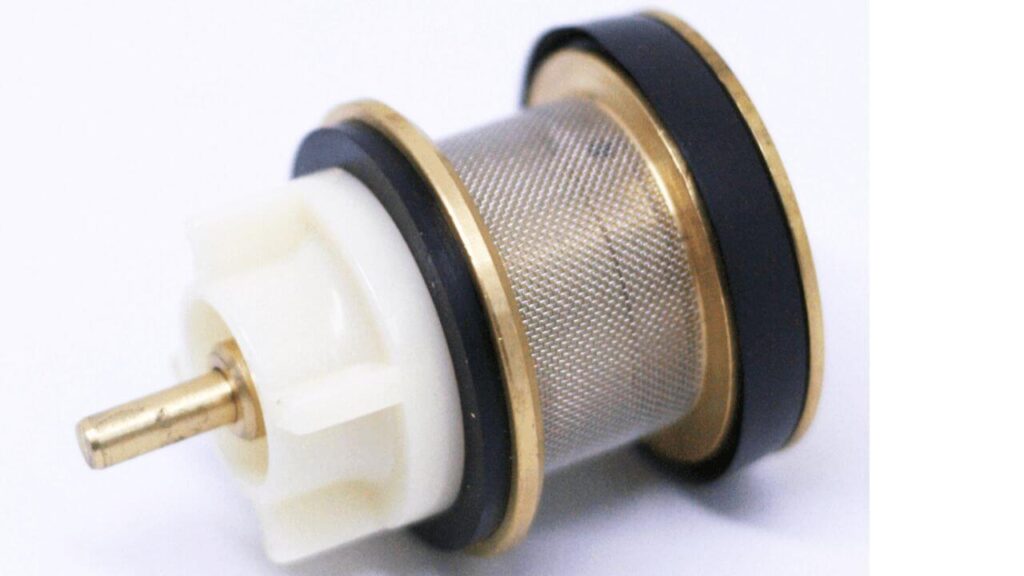
This is the most common type of flush valve. It is used in older toilets and ones that are designed to have a single person using them.
This type of flush valve is used with wall-mounted and floor-mounted toilets and gravity-fed and pressure-fed flushing systems.
The piston style works by pushing a rod up through the bottom of your toilet tank when you
press down on your handle or lever. This causes water from the inside of it to be released into your bowl via an opening called a “chamber.”
Once this chamber fills up with water, any more pressing on your handle will cause another amount of water from inside of it to be released into whatever kind of sewage system has been installed underneath or around where you live.
2. Dual Flush Valve
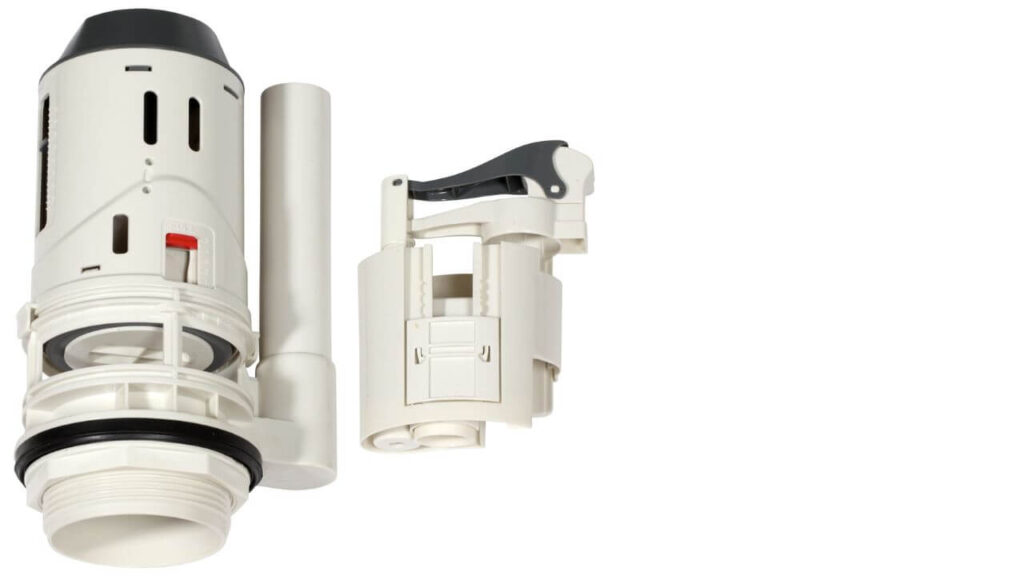
A dual flush valve is a toilet fixture with two buttons. The button on the left is for flushing one half of the tank, and the button on the right is for flushing the other half.
This is a vital function on a toilet if you have a large family and need to use both tanks simultaneously.
A dual flush valve will allow you to press one button instead of physically removing the lid and manually pushing down on both levers individually.
Its good to read our blog on How To Flush a Dual Flush Toilet to get more information about it.
3. Diaphragm Flush Valve
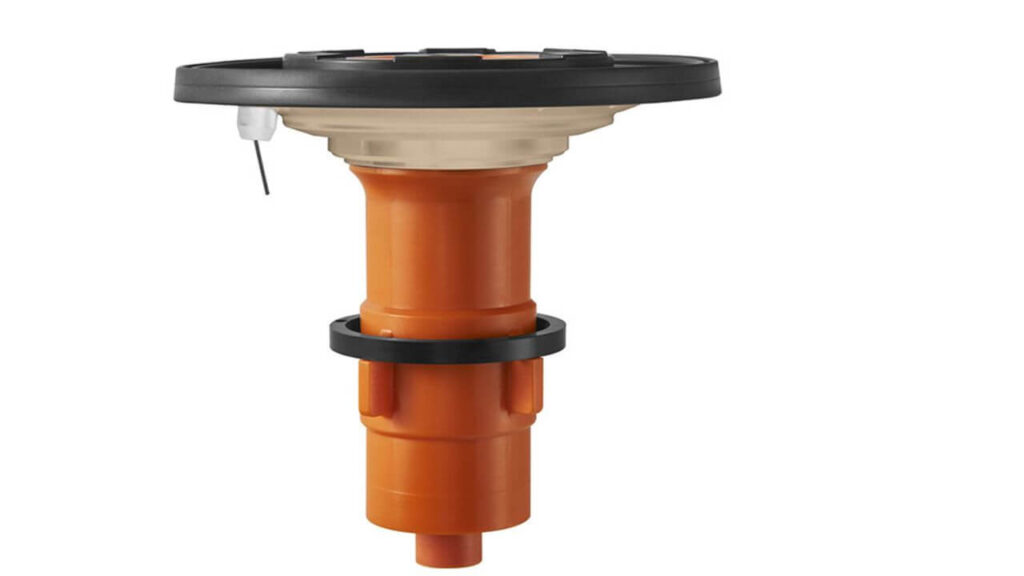
Diaphragm flush valves are used in toilets. The diaphragm is a rubber membrane device forced into the valve body by water pressure.
The diaphragm is a flexible structure that allows for small movements, which keeps the water pressure from damaging other parts of your toilet.
The main advantage of this type of flush valve is its low cost and ease of installation.
It can be used as an emergency replacement part when other more expensive types of valves break down or need to be replaced due to wear and tear on their moving parts.
The main disadvantage is that they may require frequent replacement.
Because they tend to get damaged easily from plumbing problems like leaks around pipes or fixtures within your home’s plumbing system.
That result in excessive amounts of water pressure being exerted upon them regularly over time (excessive pressure usually leads to damage).
4. Push Button Flush Valve
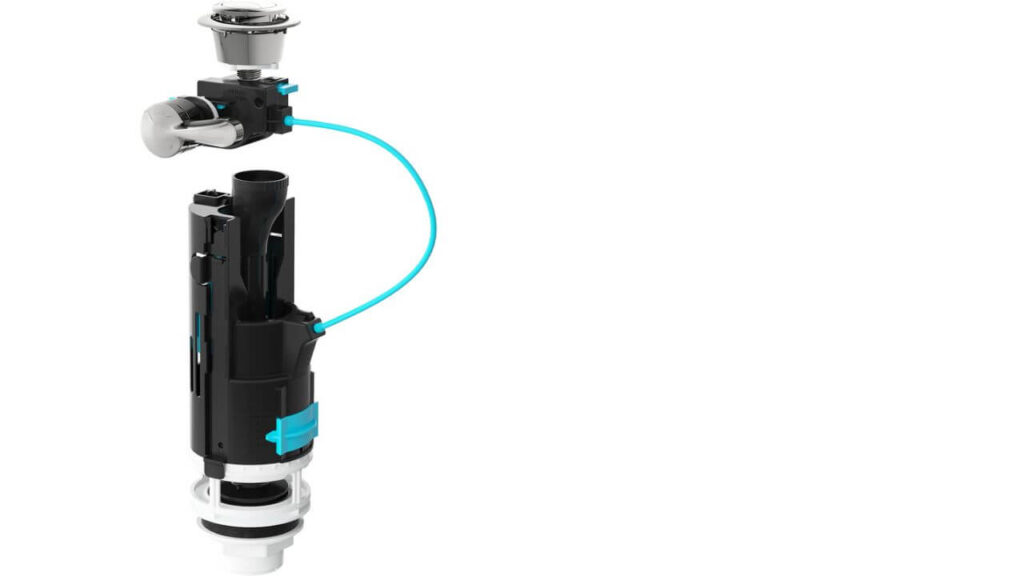
Push button flush valves are flush valve that uses a push button mechanism to open the valve. They are usually used in toilets but can also be used with gravity or pressure systems.
5. Sensor Flush Valve
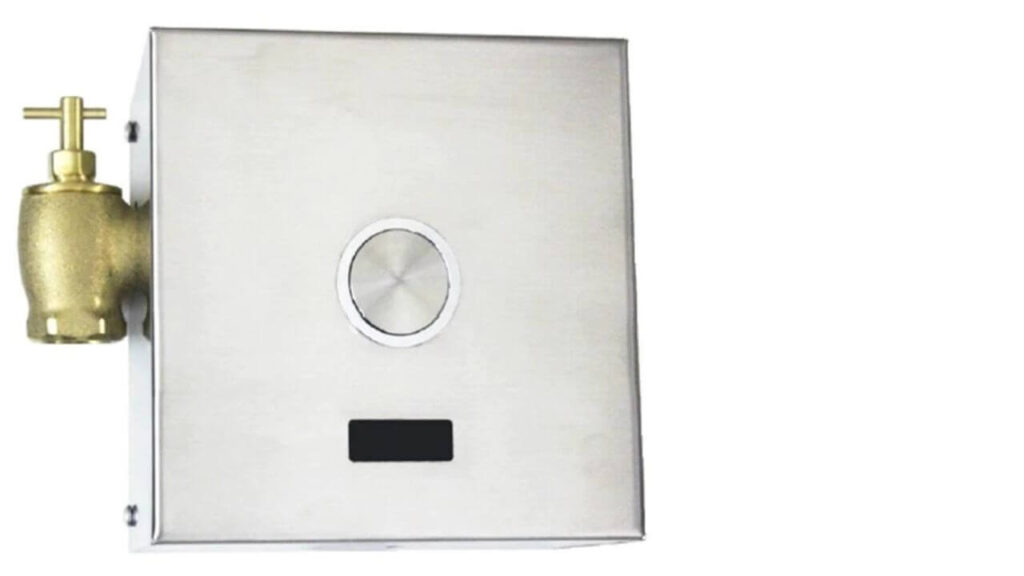
Sensor flush valves are the most expensive type of flush valve, but they offer some advantages over other types. They don’t use water when the toilet isn’t used—they only activate when it’s flushed.
This is much more efficient than other types of flush valves and helps save water in your household.
They’re also more hygienic because they wait for you to leave before flushing, which prevents any splashing or mess from occurring in the bathroom.
Read our blog on How To Make Sensor Toilet Flush to get to know more about sensor toilet and flush valve.
6. Solenoid Flush Valve
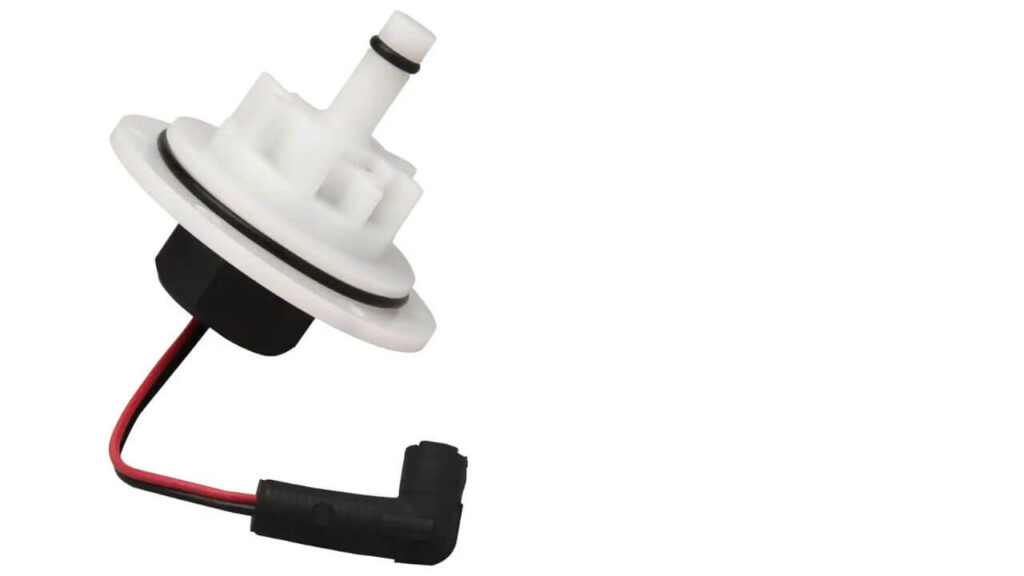
A solenoid flush valve is a type of water-saving device that uses a small amount of water to flush the toilet. It uses electricity to activate a flapper valve that allows water to flow into the bowl.
Once flushed, the solenoid closes, preventing more water from entering the bowl until its subsequent use. This flush valve is ideal for homes with low-pressure or hard water because it doesn’t require much force to activate.
Conclusion
In conclusion, I hope this brief article on how does a flush valve work help you to understand the working mechanism of this little beast.
And now you know how vital a flush valve is for your toilet. If you still have any queries, you can leave a comment, and I will try my best to answer them.
